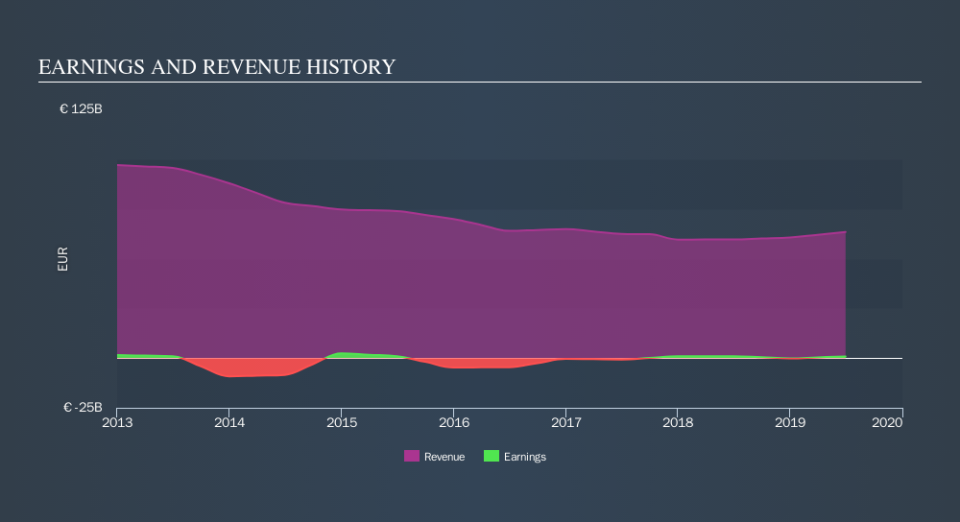Where ENGIE SA's (EPA:ENGI) Earnings Growth Stands Against Its Industry

After looking at ENGIE SA's (ENXTPA:ENGI) latest earnings announcement (30 June 2019), I found it useful to revisit the company's performance in the past couple of years and assess this against the most recent figures. As a long-term investor I tend to focus on earnings trend, rather than a single number at one point in time. Also, comparing it against an industry benchmark to understand whether it outperformed, or is simply riding an industry wave, is a crucial aspect. Below is a brief commentary on my key takeaways.
See our latest analysis for ENGIE
Was ENGI's recent earnings decline indicative of a tough track record?
ENGI recently turned a profit of €846m (most recent trailing twelve-months) compared to its average loss of -€1.5b over the past five years.
In terms of returns from investment, ENGIE has fallen short of achieving a 20% return on equity (ROE), recording 4.2% instead. Furthermore, its return on assets (ROA) of 1.0% is below the FR Integrated Utilities industry of 3.2%, indicating ENGIE's are utilized less efficiently. And finally, its return on capital (ROC), which also accounts for ENGIE’s debt level, has declined over the past 3 years from 5.1% to 3.3%. This correlates with an increase in debt holding, with debt-to-equity ratio rising from 68% to 88% over the past 5 years.
What does this mean?
Though ENGIE's past data is helpful, it is only one aspect of my investment thesis. Companies that are profitable, but have volatile earnings, can have many factors influencing its business. I suggest you continue to research ENGIE to get a more holistic view of the stock by looking at:
Future Outlook: What are well-informed industry analysts predicting for ENGI’s future growth? Take a look at our free research report of analyst consensus for ENGI’s outlook.
Financial Health: Are ENGI’s operations financially sustainable? Balance sheets can be hard to analyze, which is why we’ve done it for you. Check out our financial health checks here.
Other High-Performing Stocks: Are there other stocks that provide better prospects with proven track records? Explore our free list of these great stocks here.
NB: Figures in this article are calculated using data from the trailing twelve months from 30 June 2019. This may not be consistent with full year annual report figures.
We aim to bring you long-term focused research analysis driven by fundamental data. Note that our analysis may not factor in the latest price-sensitive company announcements or qualitative material.
If you spot an error that warrants correction, please contact the editor at editorial-team@simplywallst.com. This article by Simply Wall St is general in nature. It does not constitute a recommendation to buy or sell any stock, and does not take account of your objectives, or your financial situation. Simply Wall St has no position in the stocks mentioned. Thank you for reading.

 Yahoo Finance
Yahoo Finance 
